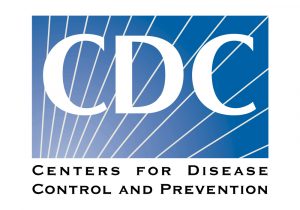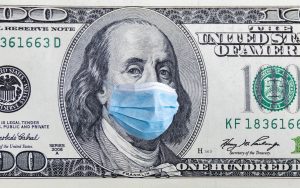In responding to the COVID-19 pandemic, CIOs across all industries may decide to undertake IT initiatives to enhance business resiliency and capabilities while containing costs. Some of these initiatives may involve large, complex migrations and implementations of technologies that require the assistance of experienced systems integrators. In “Post-Pandemic Contracting with Systems Integrators,” colleagues Jeffrey D. Hutchings and Craig A. de Ridder discuss the key takeaways that CIOs need to consider before implementing new systems.
A Summary of California Tax Legislation AB 85
On June 15, 2020, the California Legislature passed Governor Newsom’s proposed tax legislation to raise additional income tax revenue to assist in balancing the California budget. (AB 85). The Senate and Assembly each achieved the two-thirds majority vote required for California tax increases (27-11 in the Senate and 56-20 in the Assembly), with Gov. Newsom expected to sign the legislation later this week. In “California Legislature Passes Governor Newsom’s Proposal to Suspend California Net Operating Loss Deductions and Limit Tax Credits during 2020 – 2022,” colleagues Jeffrey M. Vesely, Craig A. Becker, Carley Roberts and Breann E. Robowski discuss the tax legislation’s two principal components.
Management’s Duties and Responsibilities to Disclose COVID-19 Cases to Commercial and Residential Tenants While Also Protecting Privacy
 As COVID-19 cases continue to be reported by the hundreds on a daily basis, and as businesses begin the process of returning to the worksite, it is imperative that property managers—both commercial and residential—understand their duties and responsibilities with respect to disclosure of COVID-19 cases. As difficult as it may seem, timely and accurate disclosure that an individual who has tested positive for COVID-19 has been onsite is the best practice for everyone’s health and safety, and also to limit liability. Disclosure, however, must be undertaken carefully to ensure that the disclosure is given to the appropriate individuals and entities, that individual medical privacy is preserved, and that disclosures are made in compliance with all applicable laws, regulations and guidelines.
As COVID-19 cases continue to be reported by the hundreds on a daily basis, and as businesses begin the process of returning to the worksite, it is imperative that property managers—both commercial and residential—understand their duties and responsibilities with respect to disclosure of COVID-19 cases. As difficult as it may seem, timely and accurate disclosure that an individual who has tested positive for COVID-19 has been onsite is the best practice for everyone’s health and safety, and also to limit liability. Disclosure, however, must be undertaken carefully to ensure that the disclosure is given to the appropriate individuals and entities, that individual medical privacy is preserved, and that disclosures are made in compliance with all applicable laws, regulations and guidelines.
A Court-Side Seat: A Drill Bit, Bridled Power, Elephants in the Room and the Resolution of a Fossil Feud
Several interesting decisions were released by the U.S. Court of Appeals for the DC Circuit on June 16, 2020.
States Pursue and Enact Liability Shield Legislation as Reopening Continues
 In the wake of the COVID-19 pandemic, states are beginning to pass new legislation designed to protect and reassure businesses facing unknown and significant liability risks. At this point, every state has begun some form of phased reopening following lengthy business shutdowns and stay-at-home orders. However, COVID-19 cases continue to rise in several states, and a vaccine appears unlikely to be available before 2021 at the earliest. Businesses, including building owners and operators, are now being forced to make decisions on how and when to reopen. While Congress has so far failed to enact any new federal liability protections related to the pandemic, several state legislatures have enacted new liability shields that may significantly alter premises liability for businesses and building operators.
In the wake of the COVID-19 pandemic, states are beginning to pass new legislation designed to protect and reassure businesses facing unknown and significant liability risks. At this point, every state has begun some form of phased reopening following lengthy business shutdowns and stay-at-home orders. However, COVID-19 cases continue to rise in several states, and a vaccine appears unlikely to be available before 2021 at the earliest. Businesses, including building owners and operators, are now being forced to make decisions on how and when to reopen. While Congress has so far failed to enact any new federal liability protections related to the pandemic, several state legislatures have enacted new liability shields that may significantly alter premises liability for businesses and building operators.
What Constitutes an “Act of God,” and Other Developments in Force Majeure Law
Historically, “Act of God” was defined to encompass sickness, but the concept has evolved, and it is unclear whether, in the absence of an express reference to epidemics in a force majeure clause, courts will find COVID-19 to be an Act of God. In “Tour de Force: What Constitutes an ‘Act of God,’ and Other Developments in Force Majeure Law,” colleagues Andrew C. Smith, Anne C. Lefever, Brian L. Beckerman, Stephanie S. Gomez and Colin Davis discuss the contours of the term “Act of God” and briefly cover new developments in case law regarding the doctrine of force majeure.
President’s Executive Order to Expedite Environmental Reviews of Infrastructure Challenges the Interpretation of Emergency Authorities
A recent Executive Order by President Trump directs agencies to expedite reviews of infrastructure projects based on the emergency provisions of several key federal environmental laws. In “President’s Executive Order to Expedite Environmental Reviews of Infrastructure Pushes the Envelope on the Interpretation of Emergency Authorities,” colleagues Sheila McCafferty Harvey, Reza Zarghamee, Mona E. Dajani and Alex Peyton discuss how these emergency provisions have been seldom invoked in the past, and when they have, the purpose often has been to fast-track immediate response actions to address environmental concerns, as opposed to facilitating infrastructure projects years in the making.
2020 Oil Regulation in the United States
Co-head of Pillsbury’s Projects team, partner Robert A. James, authored the article “Oil Regulation 2020: United States,” in which he describes the key commercial aspects of the U.S. oil sector; national energy policies; major laws concerning production activities, reservoir ownership and mineral rights; environmental, health and safety regulations; and other issues affecting the oil industry.
A Court-Side Seat: Airing It Out in Weymouth, No Reasonable Exception for Mercury and “40 Pages of Very Complex Information”
Last week (June 1-7, 2020), the federal appellate courts released several important rulings.
Town of Weymouth, et al. v. Massachusetts Department of Environmental Protection
On June 3, 2020, the U.S. Court of Appeals decided the case involving the Atlantic Bridge LNG pipeline project which received FERC ‘s approval in July 2017. At issue is the proposed construction of a natural gas compression station in Weymouth, Mass. The MDEP granted the pipeline’s application and granted an air permit. Local opposition resulted in this appeal of the agency’s order. The plaintiffs argued that the DEP violated its own procedures in assessing whether an electric motor satisfied EPA’s BACT Clean Air Act requirements to control NOx emissions. The appeals court agreed that the DEP’s explanation of the cost factors was inadequate, vacated the air permit and remanded the matter to the agency for further proceedings.
DC Prepares for Phased Reopening
As we approach the next phase of the COVID-19 pandemic, many states and cities around the country have proposed safety measures for construction projects during the pandemic. These guidelines range from a single page of suggestions to multipage requirements handed down by state public health officers. In “DC Real Estate and Construction Committee Issues Recommendations as DC Prepares for Phased Reopening,” John Chamberlain discusses the ways that the District of Columbia has taken to implement a community-driven, “one size does not fit all” approach to establishing recommendations for reopening.




